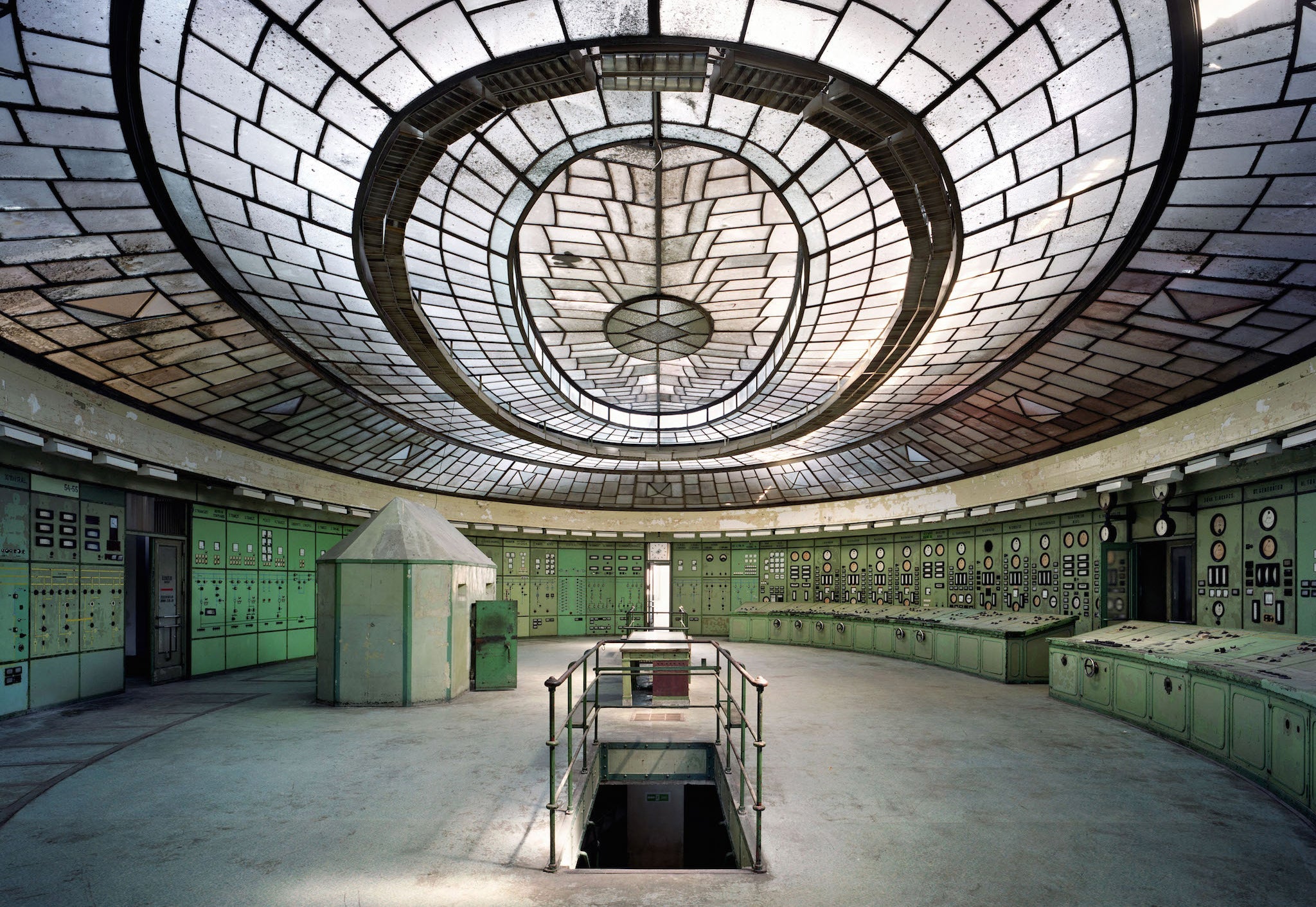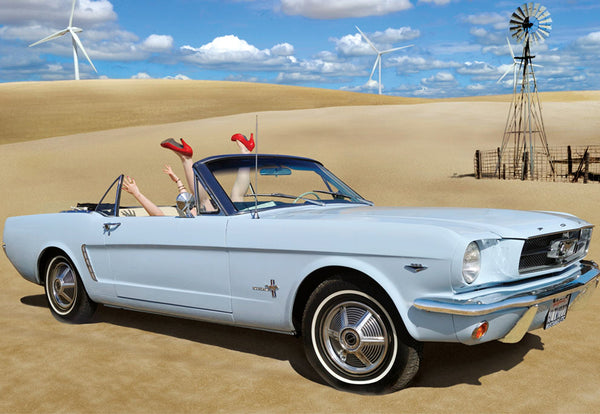Markets & Trends | Part One

Table of Contents:
Part One
1. The True Nature of the Fine Art Photography Market
Part Two
5. What to Look for When Collecting
7. The narrative and cultural meaning
Part Three
10. 4 'Why's of Fine Art Investing
12. A more relaxed and diversified niche
13. Assured returns in a turbulent economy
14. Start as a collector, become a connoisseur
'In photography there is a reality so subtle that it becomes more real than reality.' — Alfred Stieglitz
Drew Sawyer, curator of photography at the Columbus Museum of Art, says, 'It takes a trained eye, someone more knowledgeable about the market, to feel comfortable collecting [fine art and contemporary photography]'.
You would think that in the age of Instagram and stock photos the market for photography would be, well, diluted, at best.
But fine art photography is still going strong — and it's on the rise.
Part of the demand is the steady, undeniable shift in the profile of the end buyer — and their buying habits. In fact, the rise of digital may have at least partially contributed to the popularity of fine art photography because today's buyers are also digital natives.
They connect with images and they're much more open to finding photographs that they love, collecting them, following their favourite photographers and purchasing prints on digital art platforms.
They understand that photography can be more than just a record — there can be critique, commentary and the 'distillation of ideas, thought, experience, insight and understanding,' behind them.
Fine art photography is a real draw for both lovers of contemporary and modern art as well as investors looking to start an art collection at a more manageable price point.
At Lenscloud, we've witnessed firsthand how fine art photography has become the gateway to collecting. The accessibility of the medium coupled with the flexibility of the photographic form makes it the prime candidate for many private, corporate and institutional collections, significant in their cultural stature and comprised entirely of photography.
To make a smarter investment and get started with the right piece, take a glance at the evolution of the fine art photography market, its beginnings as an avant-garde medium, and the state of photography auctions today, as well as how you can take these insights and put them to use for your own collection.
The True Nature of the Fine Art Photography Market
Diane Arbus, Annie Leibovitz, Ansel Adams, Robert Maplethorpe, Frank Horvat — we bandy these names about, knowing they stand as some of the most iconic art photographers.
That's today. But photography had a hard case to sell when it was trying to be substantiated as a legitimate art medium, an artistic way to express itself. In the place of 'high art', what value could a mechanically reproducible piece of work such as a photographic print really have? This was what the cultural theorist Walter Benjamin was challenging a viewer to think about, when trying to locate the 'authenticity' of the medium.
In Benjamin's studied view, photographic print is essentially a mechanical reproduction and the end result, a photograph, stands to lose its artistic 'aura'. Therefore, editioning is the key to placing limits on the reproducible nature of a photograph.
And while the form certainly leant itself to chemical experimentation and the capturing of a more authentic moment, the immediacy of the medium simultaneously seemed to work against it. There remained many in traditional circles who felt that a photograph's "reproducibility" undermined and reduced its value -- or, indeed, any value it could hope to have.
It's a perspective that shows up in its price too, or at least has done until recent years. The price differential is a phenomenon that Juliet Hacking, programme specialist in art photography at Sotheby’s Institute of Art, says she wants to try and do away with.
People who ask questions like, 'How is it possible to have a market for something that is endlessly reproducible?’
But, Hacking says, 'the answer is so much more interesting than that. You have to chart how an art world network dedicated to photography came into being and look at how the contemporary art world took on photography as its own.' — Juliet Hacking, 'Looking at the Photography Market with Juliet Hacking', ArtTactic
In other words, the world of collecting and evaluating, understanding and deconstructing the meaning behind a fine art photography piece is half the beauty of stepping into the collecting and buying world.
Limited Edition Prints
The Lenscloud marketplace helps connect emerging art collectors and well-seasoned investors with fine-art photographs that are printed in signed limited editions.
Depending on the artist, prints can number anywhere from six to 15. Highly recognized artists and their iconic pieces, such as Frank Horvat's Givenchy Hat, can run up to 30. Once the edition sells out, the prices on the photos rise and the negatives become part of the archive of an artist or part of his/her estate.
Unlike paintings, which are a singular piece in themselves, limited editions have artificial scarcity. But 'scarcity' and 'reproducibility' are not the only measures of a value of a fine art photograph – though this is certainly what makes art photography, as a medium and a market, much more accessible to enter into.
E-commerce options like Lenscloud make buying and selling art a transactional and experiential journey. But we're also focused on highlighting the meaning behind each piece, enhancing the opportunity for cultural patronage. Fine art photography is so much more than a single shot captured in 1/100th of a second or simply part of a series of aperture opens and closes.
As we'll see in a moment, the market for photography at auctions is not only on the rise, its upward movement is a stable and steady trend that shows the development of a narrative, of creativity, staging and ideation behind one single shot.
And if 'Untitled #96' by Cindy Sherman selling for $3.9 million in 2011 is any indicator, there is a significant case for getting in on the 'ground floor', so to speak, of fine art photography.
While investments in photographs aren't a foregone conclusion, photography collectors definitely stand to gain a generous profit if they hold a work for a few years and sell at the right moment.
However, the market for photography usually sees collectors that first buy with the heart – these collectors tend to buy things that speak to them, that they find beautiful and interesting, or evocatively thought-provoking.
This makes the photography market unique – perhaps the last bastion for what art is really all about.
Art Market Insights
After the art market reached its peak in 2007, and post the 2008 financial crisis, the rise in auction and buying levels has hit a stable momentum again. There are multiple collecting categories that experienced their best year, since the initial downturn, in 2013.
Since that peak, and as of 2018, photography sales are back down, which leaves plenty of room for buyers to commit to pieces they love and find limited edition prints from emerging art photographers.
According to reports by ArtTactic, contemporary photography broke the ceiling, becoming the largest segment of the photography market in 2016, at 43.7%.
Besides the price point, the point of transaction is also much more accessible. Photography as a form is quite democratic but the translation of retail sales and even auctions for real-time events onto the digital landscape makes it even more so, with multiple auctions taking place online.
Up, down and up again: In the years from 2009 to 2015, the photography category saw peaks and dips in wild sales cycles. Then, in 2013, photography reached $30.6 million in total sales thanks to a nearly 40 percent year-on-year improvement.
According to Deloitte, there are key macroeconomic trends that can be seen in art markets today:
- There is a worldwide increase in prosperity around the world, especially in Asian countries. This coincides with the fact that Asian collectors from Taiwan to Shanghai were willing to pay approximately US$10,000 to US$200,000 for quality photography work from emerging Japanese art photographers.
- It's estimated that art markets have experienced a compounded annual market growth rate of 8% from 1993 to 2009.
- Art spending is going to be on the rise, as a luxury asset, since investors will look for assets that will retain their value in the long term, especially since many say we are overdue for an eventual downturn in global markets as a whole.
- Art markets are incredibly robust: Christie’s two spring photography auctions alone accounted for nearly half the category’s turnover in 2013.
- For photography, 80% of all transactions are below €10,000, which means there is room for individuals to enter into lucrative collecting as investing.
On Lenscloud, buyers that are looking at photography as an early investment will be well-rewarded. They have plenty of reasons to look at art as a useful asset, particularly because of the financial performance of art markets in general.
Before we take a look at the state of auctions, let's consider the economics of the art market.
Most investments are sensitive to a general economic slowdown, which leads to a drop in demand. This isn't the case with art, however, because wealthy investors have a broad financial cushion of disposable income and so they can retain their purchasing power, even during a downturn.
The financials of art markets hold further benefits for collectors looking to eventually use art assets as a diversified investment:
- Art assets may experience favourable tax breaks
- There is no 'minimum investment' required for photography and it's unrelated to other financial assets
- There is a possibility of extra revenue by lending the piece out to exhibitors at a later date
- Art photography can provide a defence against inflation and it can be insured against risk
Richard Caldicott | Detail of 'Untitled #77', 1999
The Auction Market
Auctions usually stem from bigger players like Christie's, Sotheby's, and Phillips/Bonhams. In 2013, for example, the first auction at Christie's came from a private collection of modernist photos and it generated over $7.5 million.
Findings from the ArtTactic Photography Art Market Confidence Indicator — which is an art index established in 2011 and based on 75 important international collectors, curators, auction houses, dealers and art advisors — tracked that photography auction sales rose to 66%.
The presence of online transactions and e-commerce — i.e., business conducted online — is the perfect context for the success of art photography. Indeed, digital-based transactions actually contribute to the medium's success.
According to the Hiscox’s 2017 report, ‘online art market sales reached an estimated US$3.75 billion in 2016, up 15% from 2015’. This gives the online art market an 8.4% share of the overall art market, up from 7.4% in 2015.
Following suit from Christie's success, Bonhams only began holding photography sales in March and April of 2013. Collectors in the Photography market continued their purchases, with the greatest share of sales falling within the $10,000- $50,000 price range across Sotheby’s, Christie’s and Phillips in London, New York and Paris, though the distribution varies.
Modern photography was, in fact, the focus of the spring auctions. Works by established contemporary artists in small editions, and vintage prints, made up the rest of the demand, including artists like Marcus Lyon, Javier Vallhonrat, Francesca Woodman and Nick Brandt.




